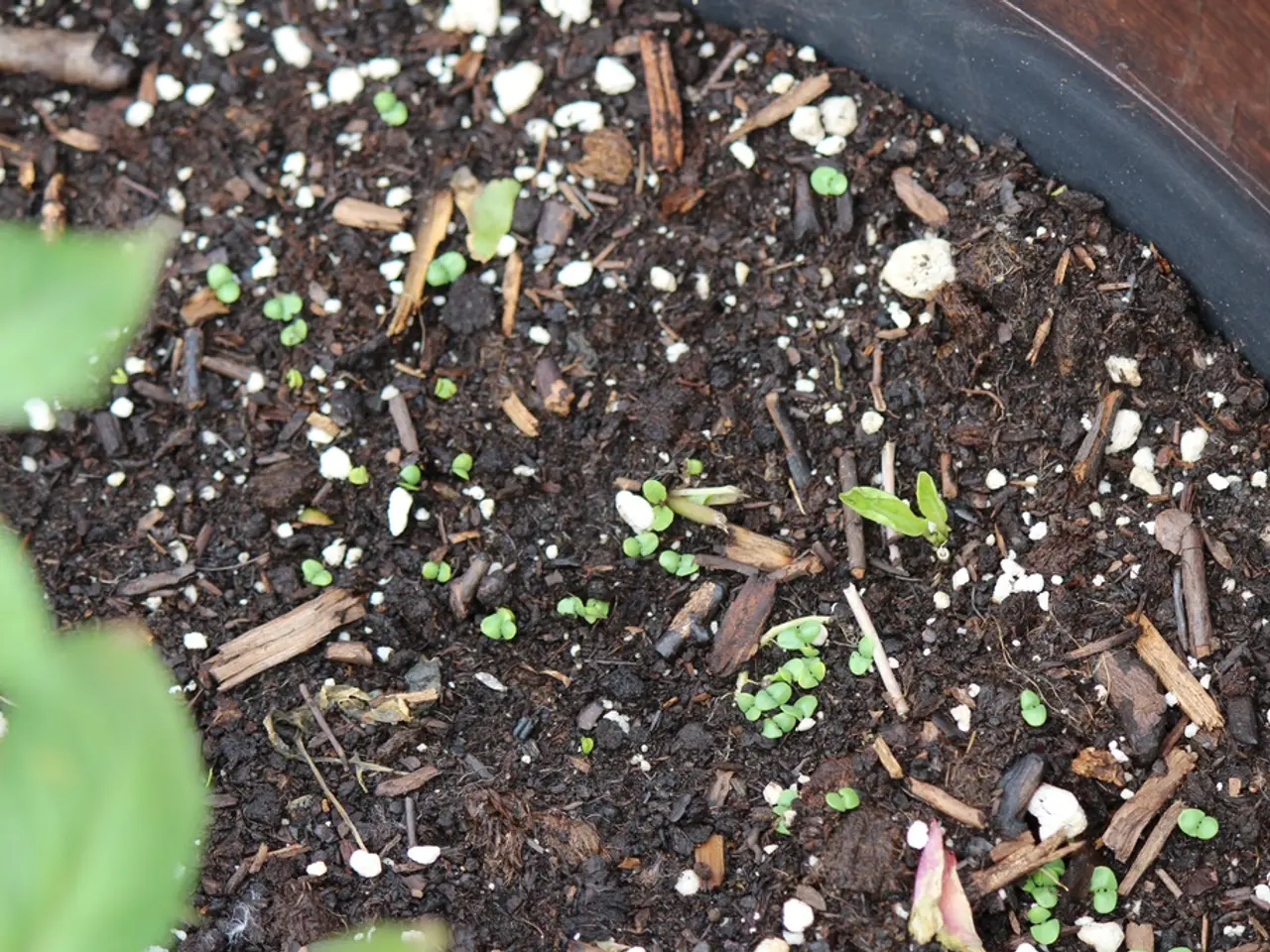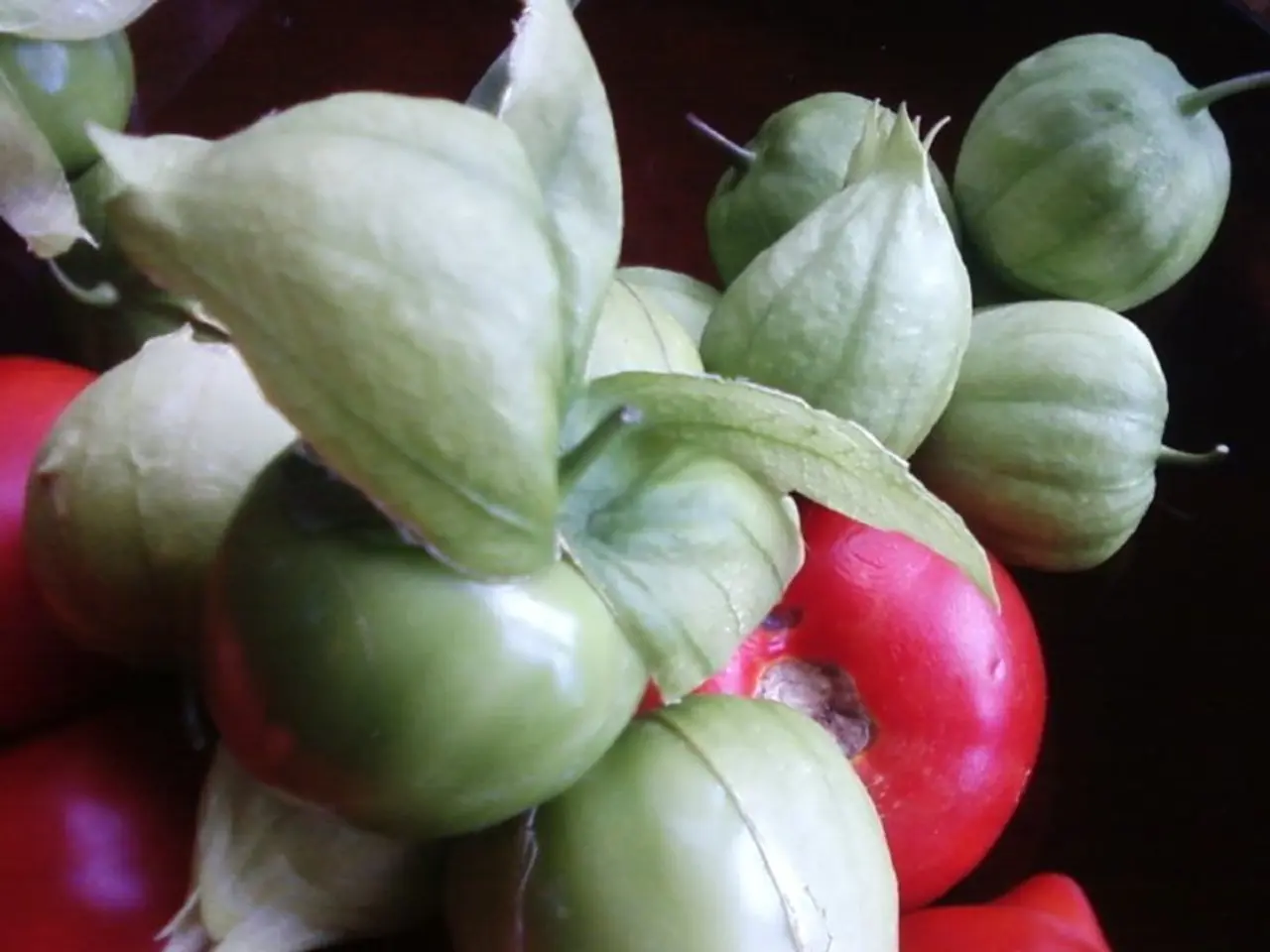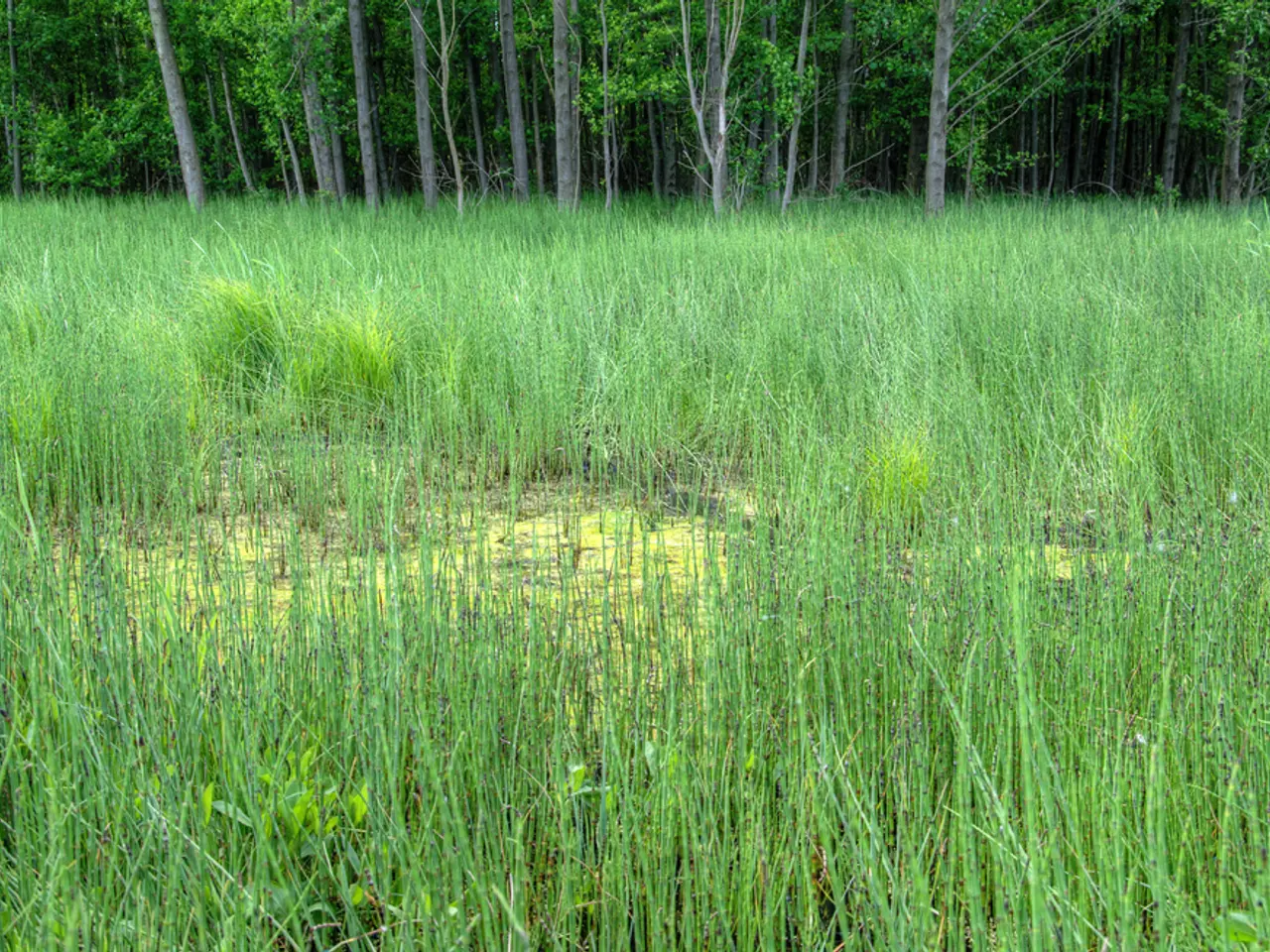Enhancing Clay Soils: Using Plants to Loosen the Compacted Earth
In the world of gardening, clay soil often poses a challenge due to its dense and heavy texture. However, with the right strategies, it can be transformed into a fertile and suitable growing environment for various plants.
One effective method is the addition of organic matter. Incorporating 2 to 3 inches of compost annually and mixing it into the top 6 to 8 inches of soil helps improve soil aggregation, aeration, and water infiltration. Coarse organic materials like wood chips, aged bark, or leaf mold also aid in improving texture and drainage by creating pore space within the dense clay matrix.
It's important to avoid common mistakes, such as adding sand alone to clay soil, which can create a concrete-like mixture if not balanced with organic matter. Working clay soil when wet should also be avoided, as it causes compaction that can last for years.
Another useful technique is the application of gypsum (calcium sulfate), which promotes clay particle aggregation, improving soil structure and reducing compaction. Aeration techniques, such as core aeration, especially with commercial equipment, create channels in the soil, encouraging better root penetration and water movement.
The timing of amending clay soil is crucial. It should be done when moisture content allows the soil to crumble easily, typically in late spring or early fall for temperate climates, to avoid compaction caused by working it too wet.
Soil pH management is also vital. Clay soils sometimes have pH imbalances. Adding lime can raise pH if soil is too acidic, while sulfur amendments can lower pH if overly alkaline, aiding nutrient availability and soil biological activity.
Supplemental materials like rice hulls provide sustainable organic matter that improves aeration and drainage while slowly decomposing to enrich soil.
Cover crops like clover, alfalfa, and buckwheat can penetrate and loosen clay soil, improving drainage and aeration. To amend clay soil with cover crops, mark out the area, loosen the soil, plant the chosen cover crop, allow it to grow for a full season, and then cut the plants at ground level, leaving the roots to rot in the soil.
Soil builder mulches, such as compost, bark, grass clippings, fall leaves, or manure, can be used to cover worked areas in the soil. Bark helps aerate the soil and creates air pockets, improving drainage and oxygen supply to plant roots.
Collectively, these methods enhance clay soil by increasing organic carbon, improving soil aggregation, reducing bulk density, and enhancing water infiltration and retention balance. They transform heavy clay from a dense, poorly drained medium to a more friable and fertile growing environment suitable for diverse plants.
Additionally, containers can be used to grow plants that prefer lighter soils, providing variable heights, while raised beds can provide complete control over soil conditions and make gardening easier for those with clay soil. Worms can also be added to the soil to accelerate the decomposition of organic matter.
In conclusion, with a combination of organic matter addition, careful physical manipulation, and specific mineral amendments, clay soil can be effectively amended to improve its structure, texture, and suitability for planting, creating a thriving garden for all.
[1] Soil Life, "Amending Clay Soil for Better Plant Growth." Accessed on August 15, 2022. https://soillife.com/amending-clay-soil-for-better-plant-growth/
[2] The Spruce, "How to Improve Clay Soil for Gardening." Accessed on August 15, 2022. https://www.thespruce.com/improve-clay-soil-for-gardening-1807768
[3] Garden Myths, "Adding Sand to Clay Soil." Accessed on August 15, 2022. https://gardenmyths.com/add-sand-to-clay-soil/
[4] The University of Georgia, "Amending Soil for Gardening." Accessed on August 15, 2022. https://extension.uga.edu/publications/detail.html?number=C1096
[5] The University of California, "Rice Hulls: A Sustainable Soil Amendment." Accessed on August 15, 2022. https://cecentralcoast.ucanr.edu/blogs/blogcore/postdetail.cfm?postnum=34818
- Enhancing your home-and-garden lifestyle, you might find innovative ways to transform your heavy and challenging clay soil into a nurturing environment for diverse plants. Incorporating organic matter, such as compost and coarse materials like wood chips, can significantly improve soil structure and drainage.
- To maintain a thriving garden, consider applying a variety of soil amendments, such as gypsum, lime, or sulfur, to manage pH levels. Cover crops and soil builder mulches can also contribute to improving your clay soil's texture and structure, making it more suitable for planting various plants.




